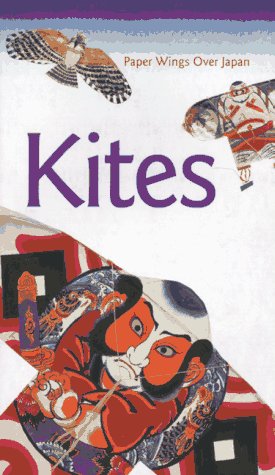
(from The Kiteflier, oct97)
This delighfful 95 page softback book has been prepared by the cognoscenti of Japanese kites: Tal Streeter, Scott Skinner. Masaaki Modegi and Tsutomu Hiroi. The group has come together under the auspices of Scott Skinner's Drachen Foundation to provide an in-depth catalogue of the Drachen Foundation travelling exhibition of Japanese kines. The result is a well coordinated series of chapters that cover all aspects of Japanese kites.
I particularly appreciated the explanation of the characters that feature on the kite skins - poor old Daruma who was so absorbed in his meditation that his legs rotted away from under him and leaving him egg shaped. True or false? Fascinating mythology. The history - both ancient and modern - is adequately described as are notable kite makers. Kites by the master kite maker, Teizo Hashimoto, form a significant part of the large number of excellent colour illustrations. It is worth buying the book just for the illustrations of these inspiring kites; Tiezo and Kiyo Hashimoto devoted their lives to kites in a way that is impossible today and it is no wonder that probably only one master Edo kitemaker survives. Of course there are many other kitemakers and illustrations of a wide diversity of their kites is given. I was particularly taken by the gently erotic kites of Kazuo Inoue.
